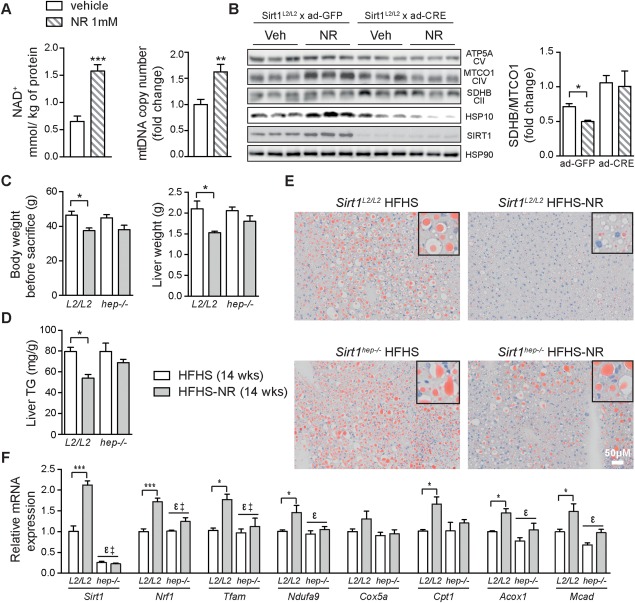Figure 6.

NR‐mediated liver benefits arise from liver‐specific SIRT1‐dependent activation of UPRmt retrograde signaling. Primary hepatocytes cells treated with NR (1 mM; 24 hours) show increased (A) cellular NAD+ levels and mitochondrial abundance. (B) NR treatment of Sirt1 L2/L2 hepatocytes infected with an adenovirus expressing Cre attenuated mitochondrial protein expression and mitonuclear imbalance (SDHB/MTCO1 ratio) upon Sirt1 LOF. Increases in HSP10 are also shown to be dependent on SIRT1. (C) Body‐weight change, liver weight, and (D) liver TG levels in liver‐specific Sirt1hep−/− and SirT1L2/L2 mice fed an HFHS diet with NR for 14 weeks. (E) Images of representative liver sections stained with Oil Red O (n = 5). (F) Relative changes in transcript levels of genes associated with mitochondrial biogenesis and β‐oxidation (n = 5) in mice of the indicated genotypes. *P < 0.05; **P < 0.001; ***P < 0.0001 compared to the HFHS cohort. ϵ P < 0.05, overall effect of treatment versus control mice; ‡P < 0.05, interaction of each treatment versus control mice. Data are expressed as mean ± SEM. Two‐way ANOVA with a post‐hoc Holm‐Sidak test was used for statistical analyses of panels B, C, D and F. Student t test was used for the statistical analysis of panel A. Male mice were used for these experiments. Abbreviation: Veh, vehicle.
